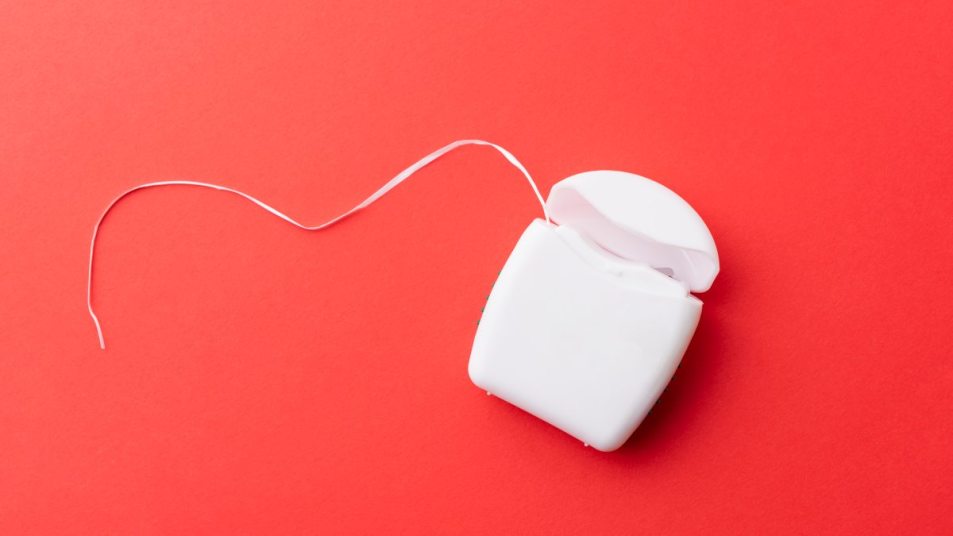Is a Water Pick Better Than Using Dental Floss? The Answer May Surprise You

How many times have you been asked, “how often do you floss?” while you’re in the dentist’s chair? And how many times have you been honest about it? (We’ve all been there!) It’s no secret that many of us hate flossing. It’s tedious and feels wasteful to throw away a string of floss after each use. But is the alternative — using a water pick — equally as effective? We’re here to explore the big debate: Dental floss versus water pick.
The Pros and Cons of a Water Pick
“Water flossers are extremely beneficial for removing food stuck between your teeth, especially in those hard to reach places, and [to wash out] pesky bacteria that can lead to plaque or cavities” says Dr. Jeffrey Sulitzer, DMD, chief clinical officer with Smile Direct Club. “Using a water flosser in your oral care routine can also reduce gum disease and any bleeding. [Smile Direct Club] water flossers remove 99 percent of the plaque between teeth and below the gum line, and are 50 percent more effective than string floss.”
I decided to try a water pick for the first time a few weeks back — specifically, the Smile Direct Club Water Flosser (Buy from Smile Direct, $35). After using it every day, I decided that it was an excellent addition to my oral hygiene routine. It’s quick and easy, and strangely enough, I loved the sensation of water shooting between each tooth — it felt like it was really cleaning the nooks and crannies.
There was certainly a learning curve (spraying your tongue hurts!), but the “soft” setting on the flosser helped me get used to it. I’d recommend buying the Large Tank Water Flosser (Buy from Smile Direct, $40). For just $5 more, it eliminates the nuisance of continuously refilling the tank as you floss.
But, does a water pick truly replace dental floss?
The Pros and Cons of Dental Floss
The cons of flossing amount to one main issue: It takes time. After brushing your teeth for at least two minutes, flossing feels like an extra chore.
In addition, flossing requires a certain amount of dexterity. As we get older, we may lose some of that dexterity or even develop shakes in our hands, which makes flossing all the more difficult.
But the pros might outweigh the tediousness of the task. Though we may hate to acknowledge it, flossing significantly reduces the likelihood of gum disease and tooth decay. The American Dental Association (ADA) explains that the hard-to-reach surfaces of your tooth (i.e. between each tooth, and far back in your mouth) need that extra attention.
Dr. Marina Gonchar, DMD and Owner of Skin to Smile, agrees. “Nothing can replace the full benefits of flossing,” she tells First for Women. “If done properly, flossing not only removes debris around the gum-line but also removes plaque and bacteria between the teeth, which is where most cavities originate.”
The Bottom Line
“Water flossing alone can clean plaque around the gum-line effectively, but cannot remove the plaque between the teeth, thereby missing an essential part of the tooth,” Dr. Gonchar adds. “Therefore, flossing is the best for overall oral hygiene, water flossing can be used to supplement but never replace flossing.”
So, what’s the takeaway? If you have difficulty flossing because of a tremor or another medical issue, don’t leave your oral health up to your toothbrush alone. A water pick is far better than nothing. But, if you have the option, try both!
Here’s what we recommend: Use a water pick in the morning (when you need to get out the door quickly), and dental floss in the evening. And smile, knowing that you’re doing great things for your oral hygiene and overall health.
















